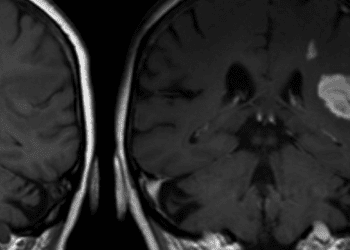[CANCER] Marijuana associated with increased risk of germ cell and nonseminoma testicular cancer
Image:CC
Primer: The onset of testicular germ cell tumors (TGCTs) typically occurs during puberty, and various studies have implicated changes in steroid hormones as culprits in bringing upon the development of this disease. We also know that the incidence of TGCTs has been on the rise for over 30 years – naturally suggesting non-genetic factors could be at play. Researchers are starting to look at exogenous substances that might feed into the endocrine system and might tip the scale towards developing TGCTs – queue the entrance of marijuana. It was first associated with an increased risk of nonseminoma testicular cancer in 2009, and subsequently once more in a small observation study. The authors hoped to conduct a large study, controlling for various demographic factors in order to better elucidate a relationship.
This [case-control] study: Cases (163) and controls (292) were matched on age, race and neighborhood and drug use at time of diagnosis was ascertained via patient interview. While cases had a higher history of cryptorchidism, a known risk factor for testicular cancer – this was adjusted for in the analysis as well as use of cocaine and amyl nitrite. Ever users (encompassing everyone from frequent to single users) of marijuana had an increased risk (1.94; 95% CI, 1.02-3.68) of testicular cancer. This was most pronounced for former users while current users had a nonsignficantly increased risk. Also note that ever users of marijuana did not have an increase in seminoma-type tumors but their use was associated with significant (>2x) risk in both nonseminoma and germ cell tumors of the testicle. The relationship was observed not to follow a typical dose response curve. In fact, those who reported less marijuana use as well as former users were more likely to be diagnosed with TGCT. In addition, the use of cocaine was associated with a decreased risk of TGCT (odds ratio 0.54; CI, 0.32-0.91).
In sum: This study confirms that marijuana use is associated with an increased risk of nonseminoma and germ cell testicular cancers. However, the increased risk among former and less frequent users of marijuana has never been reported.
Things to think about: it is possible that measurements were confounded by use of other unmeasured illicit drugs amongst cases vs. controls. Moreover, recall bias during interviews is always a concern. As this is a case-control series, surely one cannot infer causality, and in addition controls may be less inclined to report their drug use thus skewing the results. However this is the third study to make this link and the authors propose several well thought-out plausible biological etiologies by which the cannabinoid system could tip the scales towards cancer. Thus, while more research is needed to examine the association, one must also consider that cannabinoid agonists or antagonists might be used as therapies for a number of diseases and could be exposing men to undue risk. In regards to the cocaine link: this is the first study to report a decreased risk of testicular cancer in conjunction with cocaine use, and this needs to be validated in further studies. In addition, while interesting, will be unlikely to hold significant therapeutic value for obvious reasons.
Click to read the study in Cancer
© 2012 2minutemedicine.com. All rights reserved. No works may be reproduced without written consent from 2minutemedicine.com. DISCALIMER: Posts are not medical advice and are not intended as such. Please aee a healthcare professional if you seek medical advice.




